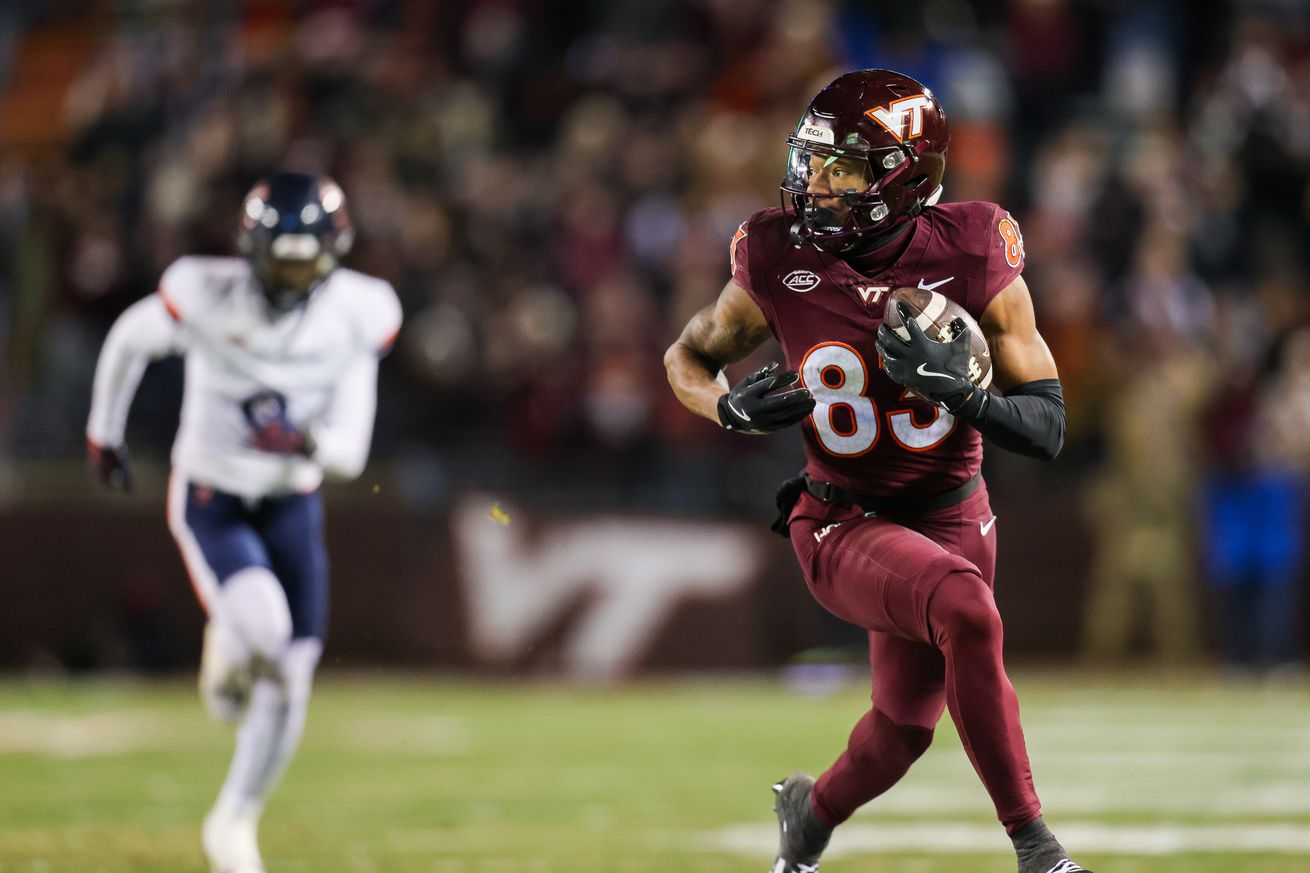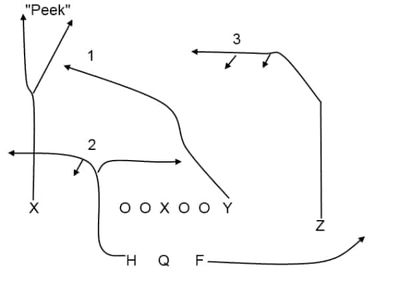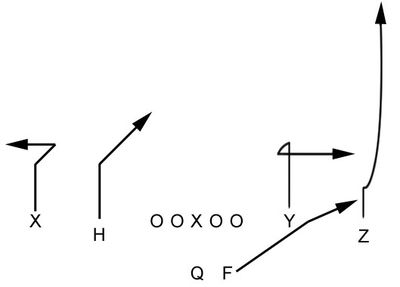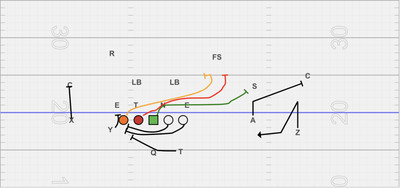
Jaylin Lane was drafted by the Washington Commanders in the 4th round of the 2025 NFL Draft. Hogs Haven wrote a nice refresher on the 5’10”, 196 pound wide receiver last week. The poll responses from the related article indicate many fans believe Jaylin Lane will be moved around formations frequently. Draft Network agreed in this pre-draft profile:
Lane primarily aligns in the slot but is constantly moved around the formation to exploit matchups and space. When aligned stagnant, Lane showcases excellent foot quickness to get off the line and into open grass. Highly utilized in the shallow to intermediate areas of the offense where much of Lane’s route tree consists of crossers, overs, digs, sit-routes, swing passes, and angle routes out of the backfield. He’s also highly utilized on designated touches via screens and reverses. Has not faced a ton of man coverage where he’s asked to stack and separate downfield. Rather, he has been largely granted free releases for teams to keep everything underneath. He often is in motion at the snap, forcing defenses to communicate and push defenders to his new location. It’s a credit to Virginia Tech’s offensive staff in adjusting their scheme to what Lane does best as an after-the-catch weapon.
Today, we will look at three ways Kliff Kingsbury might adjust his offense to maximize Jaylin Lane’s potential. The article includes route diagrams and clips, but if you need more clarification, I leaned heavily on this 2019 Athletic article by Ted Nguyen. It is an older article, but based on what we saw in 2024, still relevant to the former head coach’s passing game.
#1) Y-Cross
One of the most basic route concepts in the Air Raid offense is the Y-Cross or “95”.

The Y-Cross is a three-level “flood” concept, which means multiple receivers running routes at various depths. The theory is the deep threat to the defense comes from the “X” , the crossing route comes from the “Y” on the intermediate level, and the short level is the H-Back running an option route. The QB “peeks” to see if the X wins his route early, but the primary read is the Y receiver. It should look somewhat familiar to Commanders fans if you correlate Ertz as the “Y” running the crossing route. Here’s Ertz operating out of the slot position in a variation of the Y cross last season:
Jayden to Ertz on 3rd and 10 pic.twitter.com/vA9CL9qjyl
— Mark Tyler (Hogs Haven) (@Tiller56) January 26, 2025
Unfortunately, Ertz wasn’t able to generate much yardage after the catch. So replace him with Jaylin Lane in the slot and the offense goes to another level. Right? Not so fast. Remember, Lane’s profile tells us that he has not been frequently asked to stack and separate downfield before. In the clip, Ertz does a nice job of driving the defensive back down the field before running a crisp route to separate. The defender still closes quickly after the catch. So how will the Commanders generate separation for Lane using a similar concept? This is where Kingsbury enters the picture.
There are multiple variations of the Y-Cross based on available personnel and coverages. One variation involves the Y and Z receiver running a “switch” release. This calls for two wide receivers to invert positions immediately after the snap. The example below is a switch release called by Washington’s run game coordinator Anthony Lynn during his time with the Buffalo Bills.
While the throw goes to the Y receiver, it is easy to see how a switch release forces a quick decision by the defense. Any delay in processing or communication creates opportunities for both receivers. Newly acquired Deebo Samuel will draw significant attention from the defense allowing Lane to create from either the Y or Z position. Incorporating a switch release to the previously diagramed Y-Cross with Lane at the moment outside Z position gives him a chance to utilize his speed versus man coverage.
#2) Y-Stick
The Y-Stick is another concept common to the Air Raid philosophy.

It is considered a quick concept that stretches the defense horizontally and vertically. The deep route tries to remove defenders vertically, while the flat route attempts to widen the defense. Both create space for the Y to run a five-yard hitch route that can turn into an out route depending on the coverage. If zone, the Y will run the hitch-version with the out-route being the preferred option versus man coverage. The concept creates an easy completion and additional yards if the Y receiver can make the first man miss. Ertz generally did not gain much after the completion, but below is an example of Lane executing the Y-Stick route during his time as a Blue Raider at Middle Tennessee State University:
Again, the concept creates separation and allows the wide receiver to create after the catch.
#3) Tunnel Screen
Kingsbury already uses a variety of screen concepts in his offense. One concept that we might see more often following Lane’s addition is the tunnel screen.

The concept stretches the defense horizontally to create space and is paired with a quick throw to the outside. Typically a screen is faked to the opposite side to freeze defenders while the offensive linemen hold for a second before moving to the flat to provide blocking for the receiver. This requires athletic linemen that can get to their outside assignments quickly which Kingsbury now has in Tunsil, Coleman, and Conerly Jr. The GT Counter is one of the core concepts of Washington’s run game, so naturally Kliff likes to run the tunnel screen with a GT counter fake. It is actually the play diagramed above. Here is an example of how the play looked when it was run at USC:
This would be an effective way to get the ball in Jaylin’s hands with big athletic linemen blocking out in front for the smaller, shifty wide receiver.
These are a just a few ways Kliff Kingsbury could adjust his offense to increase Lane’s rookie success. They all revolve around concepts inherent to his current play calling. Some readers may question the lack of motion concepts included in this article, but historically Kingsbury has not utilized them. In fact, his offenses have always ranked in the bottom 5 in motion percentage.
The selection of Jaylin Lane in this year’s draft was certainly about adding a dangerous weapon to special teams, but you can also see elements of what Kingsbury wants out of his wide receivers in this scheme. Similarly, drafting Conerly Jr and signing Deebo Samuel in free agency added more pieces to the offense he wants to run in his second year with Jayden Daniels. Make no mistake, Jaylin Lane will be part of that plan.